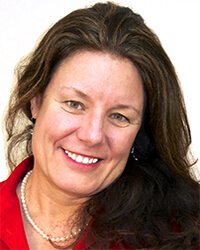The Tax Cuts and Jobs Act included numerous changes for businesses and individuals. One of these was the creation of the Opportunity Zones tax incentive, the purpose of which is to spur economic development and job creation in distressed communities by providing tax benefits to investors.
Which Communities Qualify as Opportunity Zones?
Low-income communities and certain contiguous communities qualify as Opportunity Zones if a state, the District of Columbia, or a U.S. territory nominated them for that designation and the U.S. Treasury certified that nomination. Using this nomination process, 8,764 communities in all 50 states, the District of Columbia, and five U.S. territories were certified as Qualified Opportunity Zones (QOZs). Congress later designated each low-income community in Puerto Rico as a QOZ effective December 22, 2017.
For a complete list and visual map of census tracts designated as QOZs visit the Opportunity Zones Resources page at the IRS website.
Tax Benefits of Investing in Opportunity Zones
Opportunity Zones offer tax benefits to business or individual investors who can elect to temporarily defer tax on capital gains if they timely invest those gain amounts in a Qualified Opportunity Fund (QOF). Investors can defer tax on the invested gain amounts until the date they sell or exchange the QOF investment, or Dec. 31, 2026, whichever is earlier.
The length of time the taxpayer holds the QOF investment determines the tax benefits they receive:
- Five years. If the investor holds the QOF investment for at least five years, the basis of the QOF investment increases by 10% of the deferred gain.
- Seven years. If the investor holds the QOF investment for at least seven years, the basis of the QOF investment increases to 15% of the deferred gain.
- Ten years. If the investor holds the investment in the QOF for at least 10 years, the investor is eligible to elect to adjust the basis of the QOF investment to its fair market value on the date that the QOF investment is sold or exchanged.
Deferral of Eligible Gain. Gains that may be deferred are called “eligible gains.” They include both capital gains and qualified 1231 gains, but only gains that would be recognized for federal income tax purposes before January 1, 2027, and that aren’t from a transaction with a related person. To obtain this deferral, the amount of the eligible gain must be timely invested in a QOF in exchange for an equity interest in the QOF (qualifying investment). Once this is done, taxpayers can claim the deferral on their federal income tax return for the taxable year in which the gain would have been recognized if they had not deferred it.Taxpayers may make an election to defer the gain, in whole or in part. For additional information, see How To Report an Election To Defer Tax on Eligible Gain Invested in a QOF in the Form 8949, Sales and other Dispositions of Capital Assets instructions.
Investing in QOZ Property as a Qualified Opportunity Fund
A QOF is an investment vehicle that files either a partnership or corporate federal income tax return and is organized for the purpose of investing in QOZ property. To become a QOF, an eligible corporation or partnership self-certifies by annually filing Form 8996, Qualified Opportunity Fund with its federal income tax return. The return, together with Form 8996, must be filed timely, taking extensions into account. An LLC that chooses to be treated either as a partnership or corporation for federal income tax purposes can organize as a QOF.
Qualified Opportunity Zone Property
QOZ property is a QOF’s qualifying ownership interest in a corporation or partnership that operates a QOZ business in a QOZ or certain tangible property of the QOF that is used in a business in the QOZ. To be a qualifying ownership interest in a corporation or partnership, (1) the interest must be acquired after December 31, 2017, solely in exchange for cash; (2) the corporation or partnership must be a QOZ business; and (3) for 90% of the holding period of that interest, the corporation or partnership was a QOZ business.
Qualified Opportunity Zone Business Property
QOZ business property is tangible property that a QOF acquired by purchase after 2017 and used in a trade or business and:
- the original use of the property in the QOZ commenced with the QOF or QOZ business OR
- the property was substantially improved by the QOF or QOZ business; and
- during 90 percent of the time the QOF or QOZ business held the property, substantially all (generally at least 70 percent) of the use of the property was in a QOZ.
Leased property may also qualify as QOZ business property. The lease must be a market-rate lease entered into after December 31, 2017, to qualify.
Qualified Opportunity Zone Business
Each taxable year, a QOZ business must earn at least 50% of its gross income from business activities within a QOZ; however, the regulations provide three safe harbors that a business may use to meet this test. These safe harbors take into account any of the following:
- Whether at least half of the aggregate hours of services received by the business were performed in a QOZ;
- Whether at least half of the aggregate amounts that the business paid for services were for services performed in a QOZ; or
- Whether necessary tangible property and necessary business functions to earn the income were located in a QOZ.
Questions?
Don’t hesitate to call if you have any questions or would like additional information about investing in Opportunity Zones.





